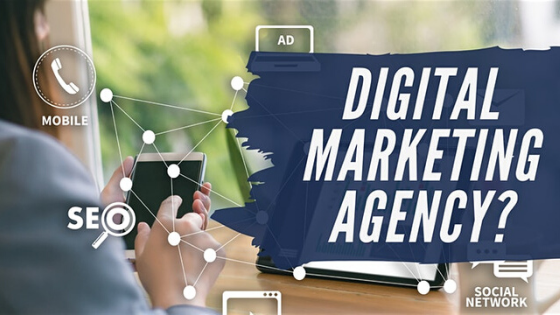
by NextGen | May 17, 2020 | Digital Marketing
In this blog post I will share with you what I love and hate about marketing. I have over 10 years of work experience in the field of marketing. This field, like any other fields, has both good and bad sides. I hope that the information that I will share in this blog post will be very useful for people interested in marketing careers and entrepreneurs who are considering doing marketing for their own business instead of hiring a marketing agency.
Why Marketing Matters
So why does marketing matter anyway?
The first reason why marketing matters is because in today’s world you cannot have a successful business without good marketing. Even if you have amazing products, unless you also do really good marketing campaigns nobody will find out about your products and buy them. Also, there are many examples of mediocre products that have become very popular because they have been marketed very well. Therefore marketing is the key to business success.
The second reason why marketing maters is because the marketing function is the heartbeat of every modern business. The most common business functions are: finance, strategy, operations, human resources, product development etc. However, modern businesses revolve around the marketing function because the marketing function is the closest to the consumer.
Marketers spend a lot of time trying to understand the target market of the company, and what people in the target market need and want. Then marketers share that knowledge with the product development team that works on creating products, the finance team that works on pricing products, the strategy team that works on creating the strategy for the business, etc. Therefore marketing is the most central business function.
What I Love About Marketing
1. Marketing Requires Both Creative And Analytical Skills
The first thing that I love about marketing is the fact that it requires both creative and analytical skills. In order to be a good marketer you need to create engaging content for your audience. Also, you need to understand the numbers and why some campaigns did better than others. So, the thing that I love the most about marketing is that marketers get to work on both creative stuff and analytics. Not many other business fields require both of those skills.
2. Marketing Is A Very Dynamic Field
The second thing that I love about marketing is the fact that it is a very dynamic and ever changing field. So, let me give you an example. When I was in college I had a cell phone with buttons on it, it didn’t even have a touch screen! I was one of the few people in my class who had a cell phone back then. And, I graduated from college in 2006 which is not that long ago, right?
When I was learning marketing in college mobile marketing didn’t even exist. Today mobile marketing is everywhere and it is very important. You cannot be a successful marketer today without doing mobile marketing. Over the 15 years since I graduated college marketing has changed so dramatically while all other business functions (finance, human resources, etc.) have largely stayed the same. I am really excited to see how marketing will evolve in the future.
3 Marketing Is A Very Broad Field
The third thing that I love about marketing is the fact that it is a very broad field with many different areas. First you have the divide between digital marketing and traditional marketing. Then within digital marketing you have many different channels, such as social, email, SEO etc. Then there is content marketing which is about developing engaging content. Influencer marketing which is about which is about being an influencer or working with influencers. Affiliate marketing which is about developing a network of affiliates for your brand. There are so many other areas within marketing. It is a lot of fun being a marketer because during your career you can work in many different areas while still staying within the same field of marketing.
4. Marketing Is Global
The forth thing that I love about marketing is the fact that it is a very global profession. I have worked with people from all over the world during my career as a marketer. In the last three years since I have been running my digital marketing agency I have worked with clients from 30 different countries. I love being exposed to such diversity and learning about our world by working with people for different backgrounds and cultures. This is especially important for me because I come from a very small country. My country has only two million people, which is roughly one quarter of New York City. So, you can fit four of my countries in NYC! I love the fact that as a digital marketer the world is my market and I am not limited to just working in my local community.
5. Marketing Is A Growing Field
The fifth thing that I love about marketing is the fact that it is a growing field with many career opportunities. The fast growth of the marketing field has created a big shortage of people with the right marketing skills. Therefore, you can always find many career opportunities in marketing if this is what you want to pursue. However, the key is to always stay up to date with changes in the marketing world and to constantly upgrade your skill set as the field changes.
What I Hate About Marketing
1. Marketing in on 24/7
The first thing that I hate about marketing is the fact that marketing in on 24/7, so you never get a break if you are a marketer because the internet never sleeps. This can be very draining and challenging for some people. Especially if you are one of those people who wants to disconnect and forget about work for a while.
As a marketer you always have to be connected and monitor what is going on. If there is something interesting going on you have to respond right away or otherwise it will be too late. Therefore, if you are a marketer you can travel a lot because all your work can be done on a computer, but you have to make sure you always have good access to the internet.
2. It Is Hard To Keep Up With Marketing
The second thing that I don’t like about marketing is the fact that it is very hard to keep up with all the new trends, all the new technology and all the new best practices in the field. It is really hard to always be in the know when it comes to marketing.
For example the Google Analytics Certificate, which is a very popular certificate in the marketing field, is only valid for two years. That means that you have to re-take the test and get re-certified every two years. This is the case with many other certificates that are popular in the marketing field. Therefore, if you are a marketer you have to always keep up with changes in the field, which can be challenging to do and requires a lot of effort.
3. Data Overload In Marketing
The third thing that I don’t like about marketing is the data overload. There is so much data available to marketers today that it is overwhelming. We have data about the customers, demographics data, purchasing behavior data, data about social media, data about website visits, etc. When you open Google Analytics or Facebook Insights you see so much data there that your head starts to hurt! So, we are bombarded with so much data every day and we have to determine which data points mean something and which data points are just noise. This can be very confusing at times and it is something that I don’t enjoy about being a marketer.
4. It Is Hard To Measure The Offline Impact Of Digital Marketing
The forth thing that I don’t like about marketing is the fact that it is very hard to measure the offline impact of digital marketing. What does that mean? Well, me and my team promote our clients on the internet and many people find out about our clients through the activities that we do online. However, it is really hard to attribute any offline sales to the online marketing efforts of me and my team. Many times we don’t get any credit for offline sales that have happened as a result of our efforts.
I hope you enjoyed reading this blog post and that you found it helpful. I have also created a YouTube video about what I love and hate about marketing. Click here to watch the video.

by NextGen | Apr 25, 2020 | Digital Marketing
In this blog post I will share with you the first three steps that I you need to make in order to develop a winning social media strategy for your business if you are an entrepreneur, or a winning social media strategy for your clients if you are a marketer.
I run a digital marketing agency and over the last three years I have developed over 100 social media strategies for clients. Even though every social media strategy is different and you cannot use a cookie cutter approach when developing strategy there are three fundamental steps that are always start with when working on social media strategy for my clients.
STEP 1: Define Social Media Strategy Goals
The first step in the social media development process is to define your goals for social media. Brands have three goals when it comes to social media: to drive awareness, to develop a community and to drive sales. So now let’s dive into each one of them.
Drive Awareness
Drive awareness is about creating awareness for your brand on social media and helping people find out about the products and services that your business offers. If this goal is important to you, you should focus on the reach metric for your posts. Identify the posts that have achieved the biggest reach in the past. Then create more posts that are similar to the posts with the best reach.
Develop Community
Develop community is about creating an engaged community for your brand on social media. This goal has two dimensions. First, this goal is about creating engaging content that will provoke many comments and likes. Second, this goal is about engaging with other people and businesses on social media. If this goal is important to you, you should engage with people and business in your target audience by commenting and liking their posts. Some of them will reciprocate that and engage with your content in return.
This goal is very hard to quantify and it is the most time consuming goal for social media. However, I think that this is a very important goal. One of the primary purposes of social media is to create communities of like-minded people.
Drive Sales
The last goal that I want to discuss today is the “drive sales” goal. There is a reason why I decided to talk about this goal last. Many brands like to use social media for driving sales. However, in my opinion social media is not the best channel for driving sales. When people want to buy something they Google it, they don’t search for it on Facebook! Therefore Google is a much better channel for driving sales. While, social media is a much better channel for driving awareness and developing community communities.
If driving sales from social media is important to you, then the best option is to run paid ads. Also, you should work with influencers and micro-influencers too. They can promote your products and services on their profiles for some compensation.
Based on my experience, these three goals are the most common goals that brands have for social media. As a first step in your social media strategy development process you should decide how important each one of those goals is to you. Then, you should decide how much time and money you want to allocate towards each one of them.
STEP 2: Define Content Categories For Social Media
The second step in the social media development process is to to define your content categories. Before you start creating content for social media you should think strategically about your presence on social media and outline your content categories.
Some common content categories include:
- Motivational/Inspirational posts with quotes
- Funny posts
- Posts with interesting questions for your audience
- “Behind the scenes” posts from your team
- Posts highlighting the features of your products of services
- Posts with interesting information about your industry
The content categories will be different for every brand. A fitness coach might have a “short workout videos” category, an architect might have a “beautiful buildings” category, and a clothing brand might have a “recommended daily look” category.
Also, you should align the content categories to your social media goals discussed in Step 1. Ask yourself how each content category will help you achieve each social media goal.
You should measure the results achieved by each content category over time and replace the low-performing content categories with new content categories. For example, if one of your categories is “questions” but you see that nobody answers your questions you should replace the “questions” category with anther category that will resonate better with your audience.
STEP 3: Select Social Media Networks
The third step in the social media strategy development process is to select the social media networks that you are going to focus on. I recommend that you start by focusing on three social media networks. Many brands want to develop a presence on all social media networks in parallel. This is a mistake. Don’t stretch yourself too thin! You need to have enough time and resources for each network. If you try to develop presence on as many social media networks as possible you will find it difficult to develop a following on any of them.
To select the best social media networks for you brand you should take into consideration the format of the content (photos or videos) that you already have or plan to create and the user demographics of each network.
If you plan to focus on photos you should consider Instagram and Facebook as your top candidates. If you plan to focus on videos you should consider TikTok and YouTube as your top candidates.
Every social media network attracts users from different demographics. As part of your social media development process you should select the social media networks that attract users with similar demographic characteristics as your target audience.
Thank you for reading my blog post! I have also created a YouTube video on this topic. If you need help with social media marketing please schedule a call with me to discuss your marketing goals.

by NextGen | Mar 12, 2020 | Digital Marketing
In this blog post I will discuss the top 3 marketing channels that digital marketing agencies serve. Hopefully, through this blog post you will gain a better understanding of what digital marketing agencies do.
Why I Decided to Write About This Topic
I run a digital marketing agency and my friends and family keep asking me to clarify what I do. The clarification questions were quite surprising to me at first, but then I realized that many people actually do not know what digital marketing agencies do.
I think it is very important that all the readers of my blog have a very good understanding of what digital marketing agencies do, therefore I decided to write on this topic today.
Important Digital Marketing Terms
There are a couple of important terms that I would like to clarify before I dive into today’s topic.
- What is Digital Marketing?: Digital marketing is any marketing activity that can be done online or by using an electronic device. So, for example, when you use your computer (an electronic device) to send an email you are performing a digital marketing activity.
- What is a Marketing Channel? In simple terms, a marketing channel is a category of marketing activities. In this blog post I will discuss the top 3 marketing channels that digital marketing agencies serve, so that means that in this blog post I will actually discuss the top 3 categories of marketing activities that digital marketing agencies do.
Channel #1: Social Media
Social Media is definitely the biggest channel for my team. We spend the most of our time on social media activities because it takes a lot of time and effort to manage client’s social media profiles.
When we get a new client for social media services the first thing that we do is we create a content plan. In the content plan we talk about the following:
- Social Media Networks: What social media networks we will cover.
- Themes: The themes that we will develop content on.
- Format: The format of each post (video, picture, carousel, etc.)
- Frequency of posting: How frequently we will post (once per day, two times per day, three times per week, etc.)
Then, after we have finished the content plan the next step is to develop the content. This means to develop the graphics and the captions for every post. Also, we perform hashtag research to find the best hashtags for every post!
The next step after developing the content is very important, the next step is to send the content to the client for approval. It is very important that the client has an opportunity to review the content and provide feedback before you post anything on his/her social media profiles! At my marketing agency we have developed a Google Sheet template that we use to collect the content in and send it to the client. Click here to see the template.
Then, after the client has approved the content the next step is to schedule the posts. We use social media management tools such as Buffer, Hootsuite or Loomly to schedule the posts. Then the posts get published automatically on the scheduled date and time.
In addition to those standard social media service, for clients who have bigger budgets we can also provide additional services such as responding to comments (on posts) or direct messages. Also, we frequently run paid ads for clients. Paid ads are a totally different world, therefore I will write a separate blog posts about paid ads in the future.
Channel #2: Email
The second digital marketing channel that I would like to talk about is email. I love email! In my opinion email is the most effective digital marketing channel. Many people still open their emails, and the average email open rate for email is over 15% percent. While, when you target people via other digital marketing channels normally only a few percent of your targeted audience will see the content that you are trying to present to them.
When we get a new client for email marketing services first we discuss their current email marketing list. We want to understand how the client has obtained their existing list of email contacts. Then, we talk with the client about different strategies that we can use to add new contacts to their email list. For email marketing it is very important to have a long and growing list of contacts.
Then we discuss with the client their desired mailing frequency. Most clients want to do monthly newsletters. So, the mailing frequency is normally once per month. Then we proceed to creating and scheduling the emails. We use the email marketing tool Mailchimp to create, schedule and distribute the email.
In addition to those standard email marketing services we can also provide more advanced email marketing services, such as email automation, to clients with bigger budgets. Email automation mean sending emails to people based on their behavior. A simple example of email automation is when you send a “welcome email” to everyone who signs up for your monthly newsletter. A more complicated example of email automation is when you create multi-step email cadences based on people’s behavior. Email automaton is an advanced topic, therefore I will write a separate blog post on this topic in the future.
Channel #3: Website
Yes, your website is a very important marketing channel! We help clients with the marketing aspects of websites such as color, text and graphics. It is very important to remember that we are not programmers, therefore we cannot do complicated, customized website elements. For more complicated website related tasks we work with the client’s IT team, or the vendor that is maintaining their website.
More specifically we help clients with the following aspects of their websites
- Making sure that the content on the website is structured in the right way so that the website can be easily found by search engines. This is called Search Engine Optimization (SEO).
- Making sure that the website looks attractive to potential clients and that all the colors and text work well together.
- Making sure that everything on the website is on-brand so that the website represents the client’s brand in the best possible way.
Thank you!
I hope you enjoyed this blog post. English is my second language so I apologize if there are any grammar mistakes in this blog post. If you enjoyed this content please click here to subscribe to my monthly newsletter.
Thank you for visiting my blog!
Aneta




